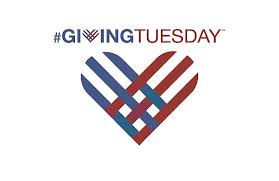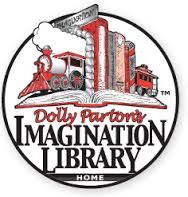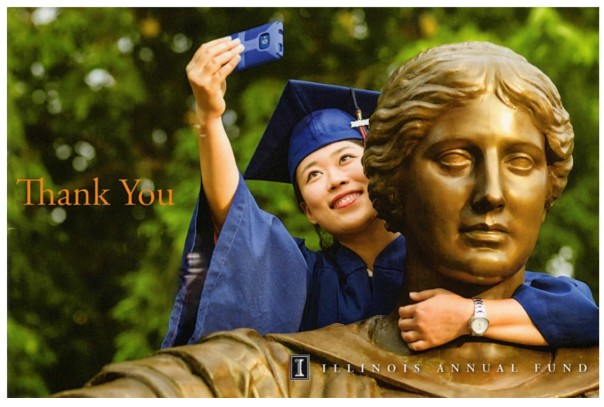 I am thrilled to be hosting the Nonprofit Blog Carnival this May for the third year in a row. This year’s theme is inspired by a TED Talks video filmed in 2007 of Katherine Fulton talking about the “future of philanthropy“. I’ve seen this video countless times, and I’m always inspired by it, which is why I’m using it as a springboard for non-profit bloggers this month.
I am thrilled to be hosting the Nonprofit Blog Carnival this May for the third year in a row. This year’s theme is inspired by a TED Talks video filmed in 2007 of Katherine Fulton talking about the “future of philanthropy“. I’ve seen this video countless times, and I’m always inspired by it, which is why I’m using it as a springboard for non-profit bloggers this month.
Throughout the years, I cannot count the number of times I’ve spoken with non-profit friends who openly worry about who will step-up as their community’s next philanthropic movers-and-shakers. They point to the impact of globalization and how it has transferred wealth and philanthropic decision-making away from Main Street.
Watching Katherine speak reminds me there are forces at work that will likely reshape the future of our work. She talks eloquently about the “democratization of philanthropy,” which always makes me think about how the resource development tools in our exist toolbox probably need to be re-thought or tweaked.
Of course, rushing to embrace these changes too soon is fraught with peril as some bloggers like Future Fundraising Now blogger Jeff Brooks has warned us about in so many wonderful posts throughout the years.
For this month’s Nonprofit Blog Carnival, I’m inviting non-profit bloggers to first click-through and view Katherine’s TED Talks video and then write something inspired by her words.

The following are just a few ideas I can imagine non-profit bloggers seizing upon as inspiration for what I anticipate will be amazing submissions to this month’s Nonprofit Blog Carnival:
- Moving from closed-small-slow-fragmented-short to open-big-fast-connected-long assumptions
- A new generation of citizen leaders
- The democratization of philanthropy
- Mass collaboration
- Online Philanthropy Marketplaces
- Aggregated Giving
- Innovation Competitions
- Social Investing
- The Social Singularity
If none of these topics are appealing, I invite bloggers to participate in the picture frame exercise at the end of Katherine’s presentation.
During the month of May, DonorDreams blog is dedicating every post to bringing you videos of non-profit leaders, donors and every day people like you participating in Katherine’s picture frame exercise. If you are not a blogger but want to videotape yourself participating in the picture frame exercise, I am happy to post your vlog on my blog platform. Simply videotape yourself, upload it to YouTube and email me the link with an explanation of who you are and what town you live in.
How bloggers should submit their work for consideration?
You are welcome to write your blog post anytime during the month of May (or even submit a post you may have previously published); however, I must receive your submission by the end of the day on Monday, May 25, 2015:
How do you submit? Simply email the following information to nonprofitcarnival[at]gmail[dot]com:
- Your name
- The URL of your post
- A two of three sentence summary of your post
We will publish the May 2015 Nonprofit Blog Carnival on Thursday, May 28, 2015 right here at DonorDreams blog.
Go visit April’s Nonprofit Blog Carnival
In April, the carnival was hosted by Craig Linton at his blog — “Fundraising Detective” The theme was “A Celebration Of SOFII – Will You Inspire Or Invest?” . He challenged bloggers to submit 100 new articles and exhibits for SOFII (Showcase of Fundraising Innovation and Inspiration).
If you’re interested in seeing what some very smart and talented bloggers submitted, click here.
Miscellaneous details?
Click here to learn more about the Nonprofit Blog Carnival and sign-up for monthly reminders. If you want to view the archives, then you want to click here.
I am very much looking forward to see what you decide to do and where you decide to take this month’s Nonprofit Blog Carnival.
Here’s to your health!
Erik Anderson
Founder & President, The Healthy Non-Profit LLC
www.thehealthynonprofit.com
erik@thehealthynonprofit.com
http://twitter.com/#!/eanderson847
http://www.facebook.com/eanderson847
http://www.linkedin.com/in/erikanderson847

 Last week, I wrote a blog titled “
Last week, I wrote a blog titled “ I wonder if these influences on the next generation of donors and fundraising volunteers will have an impact on the art of face-to-face solicitation and the future of philanthropy?
I wonder if these influences on the next generation of donors and fundraising volunteers will have an impact on the art of face-to-face solicitation and the future of philanthropy? Sorry about not posting something this morning, but I got to my hotel late last night (around midnight) and I was up five hours later for a 6:00 prospect identification/evaluation meeting. My request of Santa this year is more time added to the day and a few more weeks added on to the year. 🙂
Sorry about not posting something this morning, but I got to my hotel late last night (around midnight) and I was up five hours later for a 6:00 prospect identification/evaluation meeting. My request of Santa this year is more time added to the day and a few more weeks added on to the year. 🙂 Successful #GivingTuesday solicitations probably utilize some of the same strategies that for-profits use to create the conditions for an impulse buy. Now it all makes sense. (I might not be quick, but I usually get there.) 🙂
Successful #GivingTuesday solicitations probably utilize some of the same strategies that for-profits use to create the conditions for an impulse buy. Now it all makes sense. (I might not be quick, but I usually get there.) 🙂 Thanksgiving is a time when many non-profit organizations give thanks to their donors who support their mission with their time and money. Over the years, I’ve received Thanksgiving cards, thank-a-thon phone calls, and even a small little gift of gratitude from my favorite charities. However, the ALS #IceBucketChallenge has changed everything and set the bar higher for all resource development activities. So, I’ve spent days (if not weeks) thinking about how to use social media to steward donors during this time of the year. This morning I think I had my best idea yet. Let’s see what you think.
Thanksgiving is a time when many non-profit organizations give thanks to their donors who support their mission with their time and money. Over the years, I’ve received Thanksgiving cards, thank-a-thon phone calls, and even a small little gift of gratitude from my favorite charities. However, the ALS #IceBucketChallenge has changed everything and set the bar higher for all resource development activities. So, I’ve spent days (if not weeks) thinking about how to use social media to steward donors during this time of the year. This morning I think I had my best idea yet. Let’s see what you think. AND THEN IT HAPPENS . . .
AND THEN IT HAPPENS . . . If there is one thing all of us should’ve learned from the ALS #IceBucketChallenge, it is that social media is a powerful tool in our resource development toolbox. While we’re all still learning how to use this tool, those who innovate and try new things will surely reap the rewards.
If there is one thing all of us should’ve learned from the ALS #IceBucketChallenge, it is that social media is a powerful tool in our resource development toolbox. While we’re all still learning how to use this tool, those who innovate and try new things will surely reap the rewards. A few weeks ago I facilitated a training session titled “2014 Finish Strong: Year-End Strategies” for a group of non-profit professionals in New Mexico. Long story short . . . there were LOTS of things that non-profits try to do in the fourth quarter. Participants shared with each other what they were doing back home at their agency and we collectively talked about best practices.
A few weeks ago I facilitated a training session titled “2014 Finish Strong: Year-End Strategies” for a group of non-profit professionals in New Mexico. Long story short . . . there were LOTS of things that non-profits try to do in the fourth quarter. Participants shared with each other what they were doing back home at their agency and we collectively talked about best practices. Jeff Foxworthy has made a career out of answering a simple question: “You know you’re a redneck when . . .” This morning I thought I’d do something similar with: “You know you’re fundraising campaign has gone viral when . . .” by describing how last week unfolded for me as it relates to the
Jeff Foxworthy has made a career out of answering a simple question: “You know you’re a redneck when . . .” This morning I thought I’d do something similar with: “You know you’re fundraising campaign has gone viral when . . .” by describing how last week unfolded for me as it relates to the  Fellow blogger and fundraising genius — Jeff Brooks — publishes a blog post titled “
Fellow blogger and fundraising genius — Jeff Brooks — publishes a blog post titled “ The day is winding down. The television is on, we’re into what will likely be the last show of the evening before going to bed, and my phone starts to blow-up. Needless to say, one of my former Boys & Girls Club of Elgin board presidents and good friend, Tim Williams, just completed the
The day is winding down. The television is on, we’re into what will likely be the last show of the evening before going to bed, and my phone starts to blow-up. Needless to say, one of my former Boys & Girls Club of Elgin board presidents and good friend, Tim Williams, just completed the  I have a confession to make. For years, one of the ideas I’ve shared with clients is that a postcard can be an effective stewardship strategy. The truth is that I’ve doubted the effectiveness of this strategy primarily because I had never seen it done well. Today, I’m able to say that I’ve seen the light and officially have become a believer thanks to my alma mater — University of Illinois (UIUC).
I have a confession to make. For years, one of the ideas I’ve shared with clients is that a postcard can be an effective stewardship strategy. The truth is that I’ve doubted the effectiveness of this strategy primarily because I had never seen it done well. Today, I’m able to say that I’ve seen the light and officially have become a believer thanks to my alma mater — University of Illinois (UIUC).



 I may not be the sharpest knife in the drawer, but when I get beat over the head with something enough times over the course of a year it becomes obvious that I’m staring at a trend. LOL! In this case, I am referencing an increasingly popular activity sprouting up all over the place — Giving Day.
I may not be the sharpest knife in the drawer, but when I get beat over the head with something enough times over the course of a year it becomes obvious that I’m staring at a trend. LOL! In this case, I am referencing an increasingly popular activity sprouting up all over the place — Giving Day. As I started playing around with these ideas in my head, I’ve come to the conclusion that this doesn’t necessarily have to be a community-wide event sponsored by a community foundation or a United Way. (However, I do think a community-wide approach organized by a foundation or United Way is preferable)
As I started playing around with these ideas in my head, I’ve come to the conclusion that this doesn’t necessarily have to be a community-wide event sponsored by a community foundation or a United Way. (However, I do think a community-wide approach organized by a foundation or United Way is preferable)
 At my previous agency, their national office made tremendous investments in webinars (aka distance learning). The following are just a few of the training titles I saw them offering:
At my previous agency, their national office made tremendous investments in webinars (aka distance learning). The following are just a few of the training titles I saw them offering: Many people have discovered Slacker radio, but online radio isn’t just about streaming music while you workout.
Many people have discovered Slacker radio, but online radio isn’t just about streaming music while you workout.